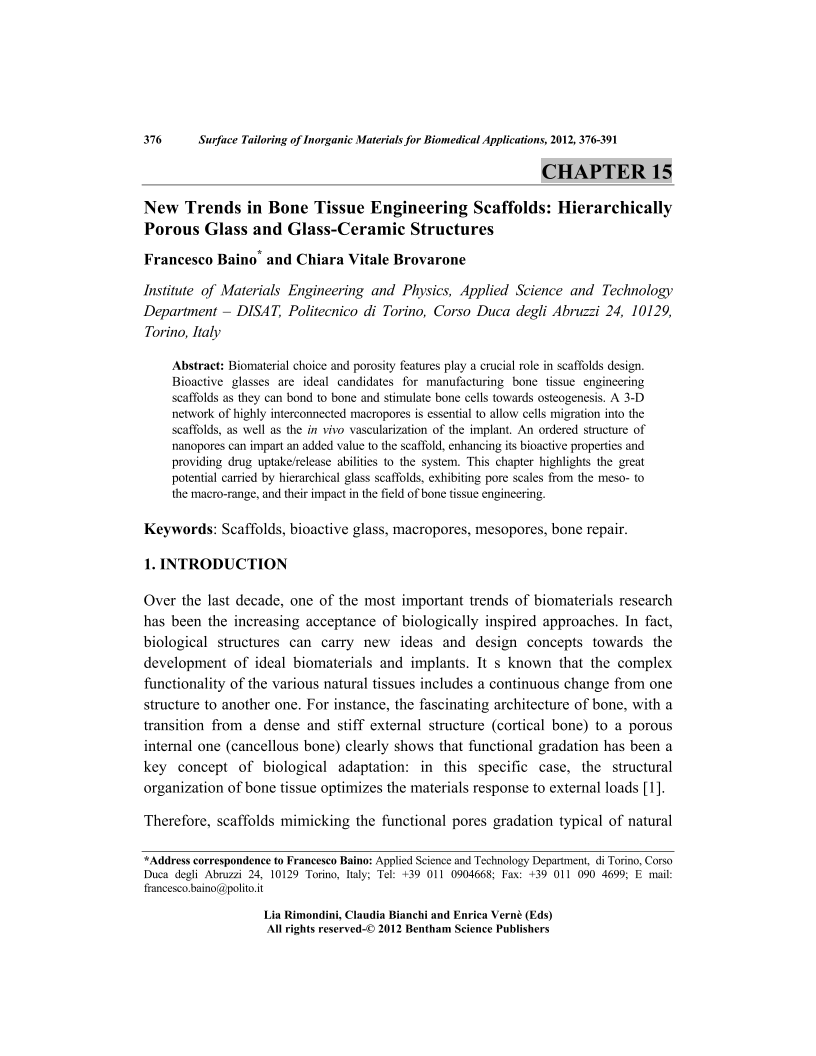New Trends in Bone Tissue Engineering Scaffolds: Hierarchically Porous Glass and Glass-Ceramic Structures

- Authors: Francesco Baino1, Chiara Vitale Brovarone
-
View Affiliations Hide Affiliations1 Institute of Materials Engineering and Physics, Applied Science and TechnologyDepartment DISAT, Politecnico di Torino, Corso Duca degli Abruzzi 24, 10129,Torino, Italy
- Source: Surface Tailoring of Inorganic Materials for Biomedical Applications , pp 376-391
- Publication Date: October 2012
- Language: English
New Trends in Bone Tissue Engineering Scaffolds: Hierarchically Porous Glass and Glass-Ceramic Structures, Page 1 of 1
< Previous page | Next page > /docserver/preview/fulltext/9781608054626/chapter-15-1.gif
Biomaterial choice and porosity features play a crucial role in scaffolds design. Bioactive glasses are ideal candidates for manufacturing bone tissue engineering scaffolds as they can bond to bone and stimulate bone cells towards osteogenesis. A 3-D network of highly interconnected macropores is essential to allow cells migration into the scaffolds, as well as the in vivo vascularization of the implant. An ordered structure of nanopores can impart an added value to the scaffold, enhancing its bioactive properties and providing drug uptake/release abilities to the system. This chapter highlights the great potential carried by hierarchical glass scaffolds, exhibiting pore scales from the meso- to the macro-range, and their impact in the field of bone tissue engineering.
-
From This Site
/content/books/9781608054626.chapter-15dcterms_subject,pub_keyword-contentType:Journal -contentType:Figure -contentType:Table -contentType:SupplementaryData105

